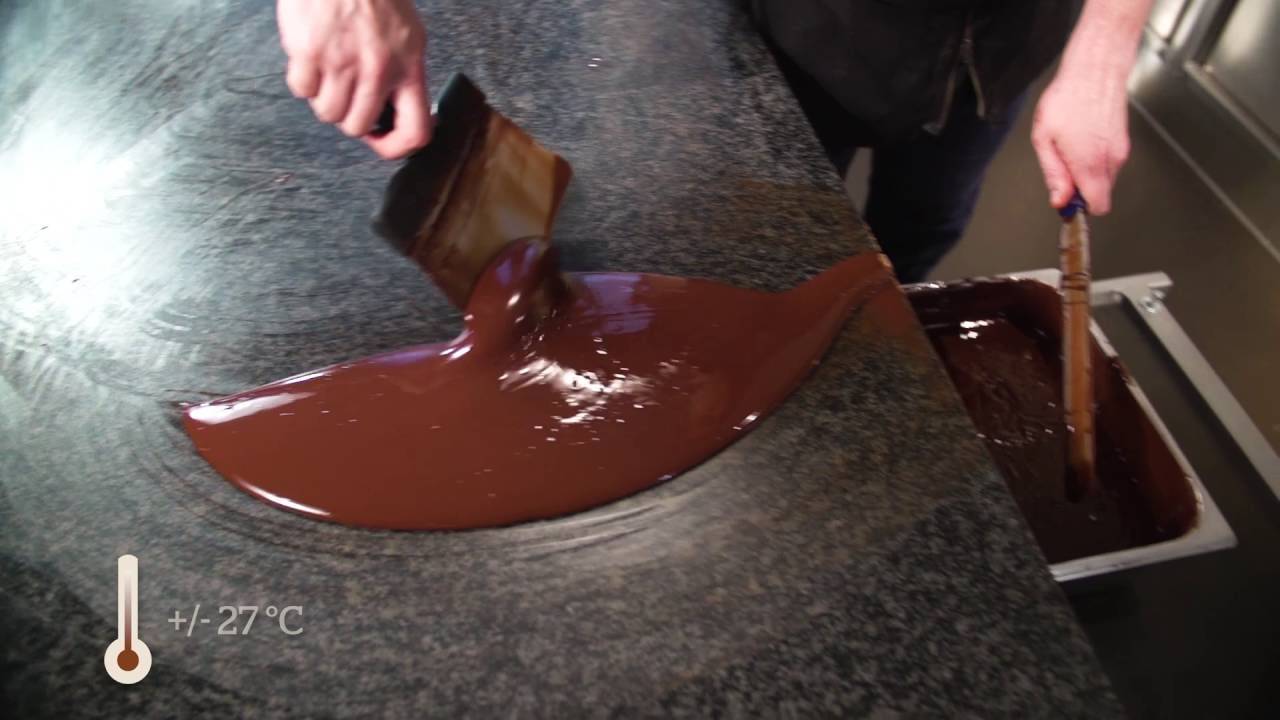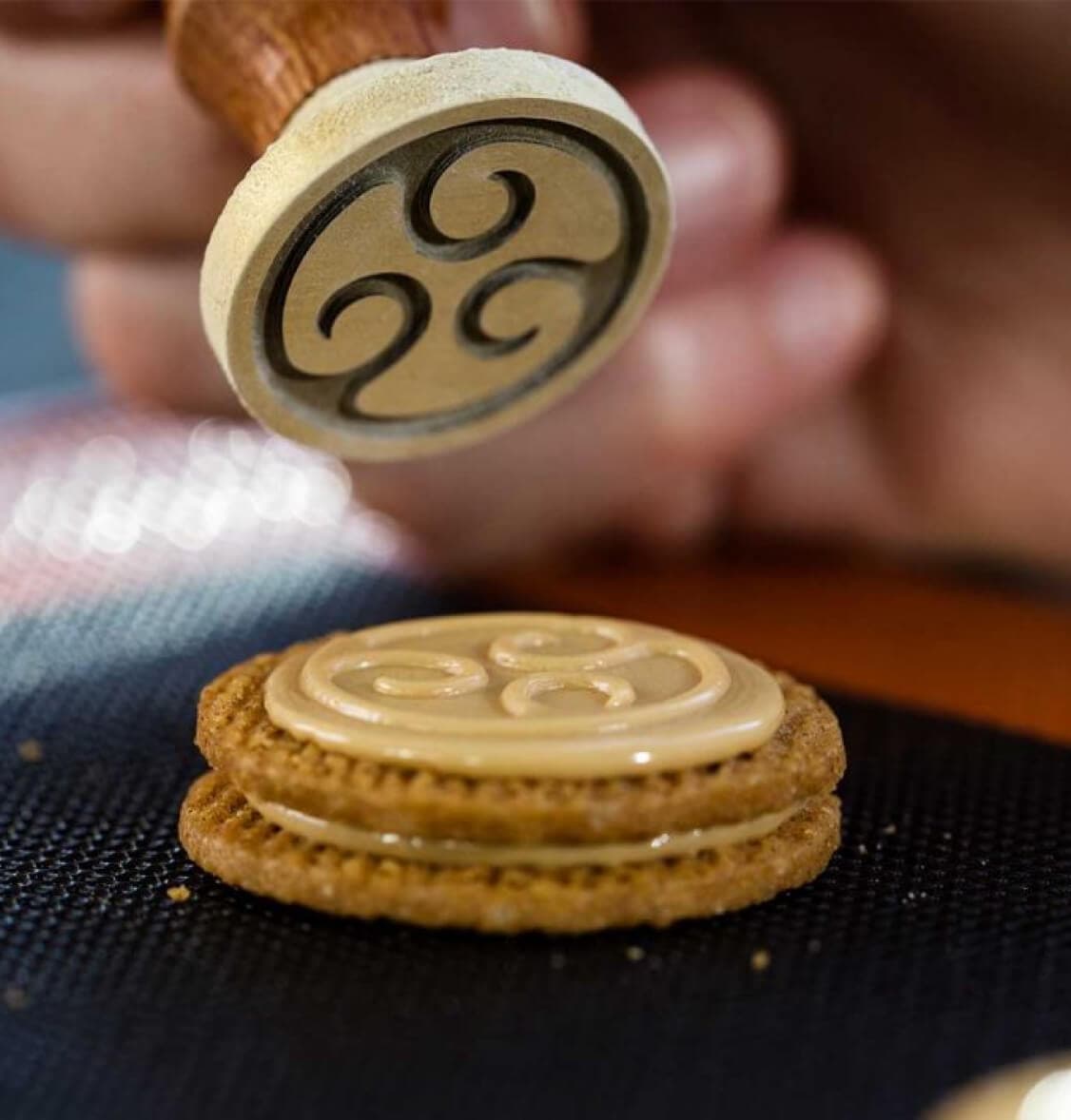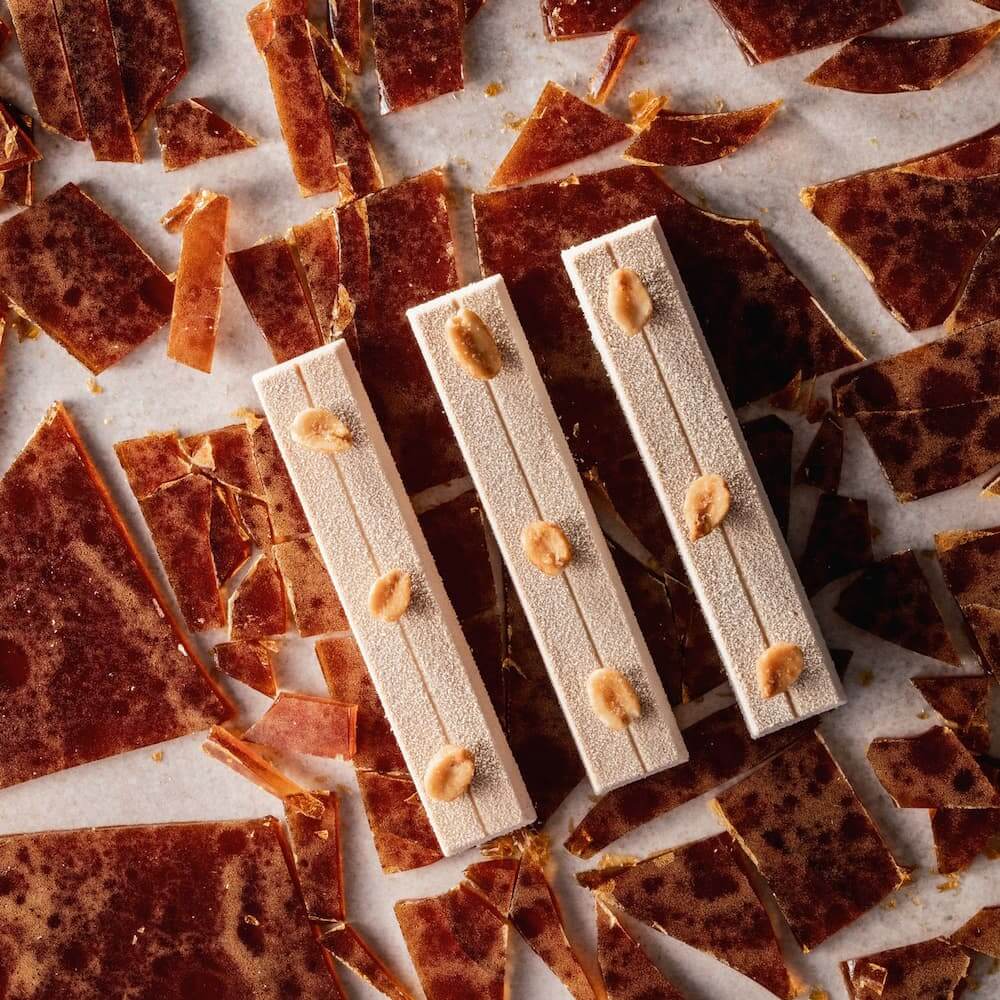
The most classic technique for tempering chocolate is handling it on a marble worktop. This video teaches you how it works and what you need to look out for.
GOOD TO KNOW
Why is fluidity so important?
The fluidity of your chocolate determines the thickness of the shell and the snap of your chocolate products: the more fluid your chocolate, the thinner and crunchier your shell will be.
Using chocolate with the right fluidity also saves time: you can cast large moulds in one go with less fluid chocolate. Chocolate with a higher fluidity is better for moulds with a lot of detail, but you’ll need to fill your mould with chocolate 2 to 3 times.
Why is it so important to pre-crystallise chocolate properly?
It helps chocolate harden, and gives it a beautiful satin gloss and a delicious snap. It makes chocolate contract during cooling, which makes it easier to unmould. Badly crystallised or uncrystallised chocolate will turn grey and won’t have an appetising gloss.
What is tempering or pre-crystallising?
The purpose of tempering chocolate is to pre-crystallise the cocoa butter in it, which is important to make your chocolate ready for processing. During tempering, the cocoa butter in the chocolate takes on a stable crystalline form. This guarantees a perfect finished product with a satin gloss and a hard snap. It also makes the chocolate contract during cooling, which makes it easier to unmould. If chocolate is simply melted (between 40 and 45 °C) and then left to cool down to a suitable working temperature, the finished product will not be glossy. If you make the small effort of bringing your chocolate to the right working temperature properly, you are guaranteed to get the desired end result. And that’s what we mean by tempering: bringing chocolate up to the right working temperature while making sure that the crystalline structure of the cocoa butter in it is stable. As you’ll discover below, the three key principles for proper tempering are time, temperature and movement.
Step 1
Melt your chocolate at a temperature between 40 and 45 °C in a double boiler or table top chocolate melter.
Step 2
Pour 2/3 of the melted chocolate onto the cool surface of your marble worktop.
Step 3
Keep the chocolate in motion by moving it about continuously with a palette knife and a scraper.
Step 4
Continue to do so until the chocolate starts to thicken (usually when its temperature is 4 to 5 degrees lower than its working temperature): that means crystallisation is taking place. You’ll notice that 'peaks' are formed when you let the chocolate fall from your scraper.
Step 5
Pour the pre-crystallised chocolate back into the melter with the rest of the melted chocolate and stir until the whole becomes a smooth mixture.
Step 6
The chocolate is now ready for processing. If the chocolate however proves to be too thick, reheat it until it becomes fluid again. Do make sure it is still pre-crystallised by taking a sample: dip the tip of a knife into the chocolate. If it is properly pre-crystallised, the chocolate will harden evenly within 3 minutes at an ambient temperature of 18 to 20°C.
Which Callebaut chocolate needs to be tempered?
Each variety or type of chocolate should be tempered before you use it to mould chocolates and hollow figures, or to enrobe cakes and chocolates. In short, whenever chocolate needs to have a beautiful satin gloss and a hard snap, tempering is absolutely crucial.
When you add chocolate to dishes as a flavour component (e.g. chocolate mousses or bavarian creams), it suffices to simply melt it without tempering. All our recipes clearly indicate if your chocolate should be tempered or not.

Need support with your chocolate confections?
- Find troubleshooting guides & tutorials
- Chat live with an advisor chef and find the right solution to your challenges



Comments